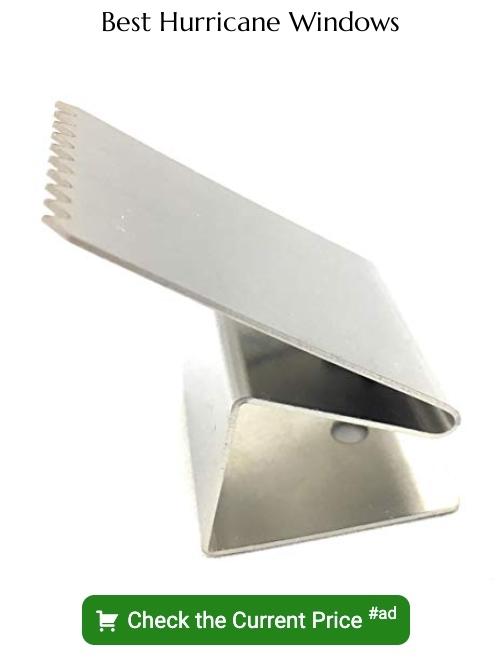While hurricane windows are designed to withstand strong winds and flying debris, they are not bulletproof.
Hurricane windows, also known as impact windows, are designed to withstand the force of severe storms and flying debris.
However, their resilience does not necessarily equate to being bulletproof.
While these windows can endure high winds and impact from flying objects, they are not constructed to withstand the force of a bullet.
The manufacturing process and materials used for bulletproof and hurricane windows differ significantly.
However, the details of these differences, which will be thoroughly explained in the following sections, might surprise you.
Key takeaways:
- Hurricane windows are not bulletproof.
- Hurricane windows are designed for severe storms and flying debris.
- Bulletproof windows are for firearms, hurricane windows are for weather.
- Hurricane windows have laminated glass and sturdy frames.
- Hurricane windows can offer some resistance against bullets, but not guaranteed.
Definition of Hurricane Windows
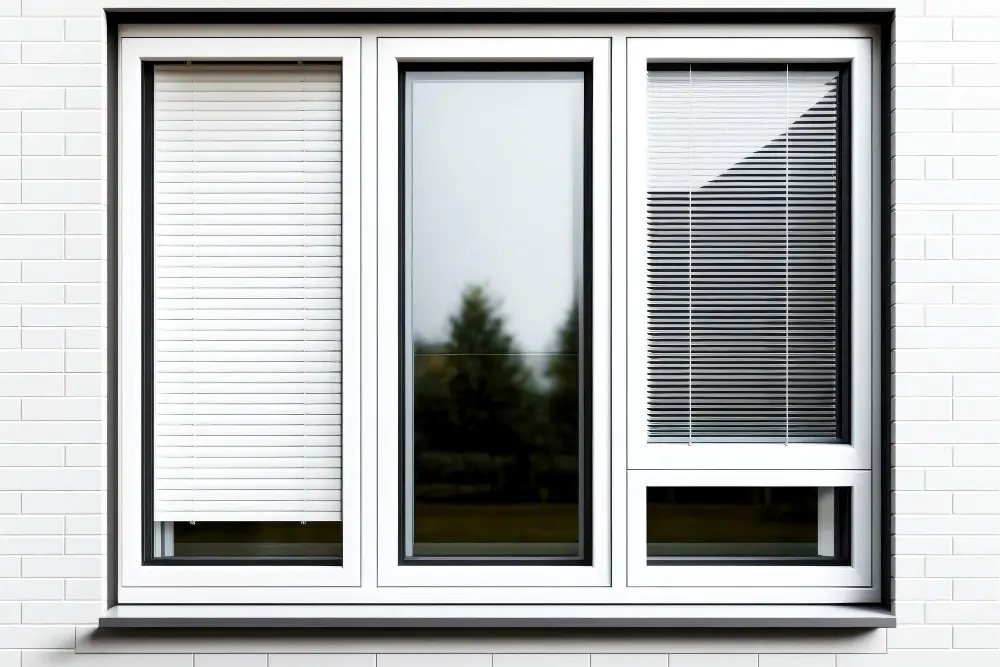
Hurricane windows, also known as impact-resistant windows, are specifically designed to withstand severe weather conditions. In the face of hurricanes or high-velocity winds, these windows continue to remain intact even if the glass shatters.
Key properties include:
- Enhanced structural integrity, imparted by a combination of laminated glass and heavy-duty frames.
- A shatter-resistant film sandwiched between two layers of glass. If the outer glass layer breaks due to high wind pressure or flying debris, this film keeps the shattered pieces in place, preventing them from scattering.
- The sturdy frames, made of materials such as vinyl or aluminum, further supplement the strength of these windows.
- These windows also improve energy efficiency, provide tints for UV protection, and aid in noise reduction.
While they are well-equipped to handle extreme weather, their performance against other forms of force, such as bullets, requires additional analysis.
Specific Features of Hurricane Windows
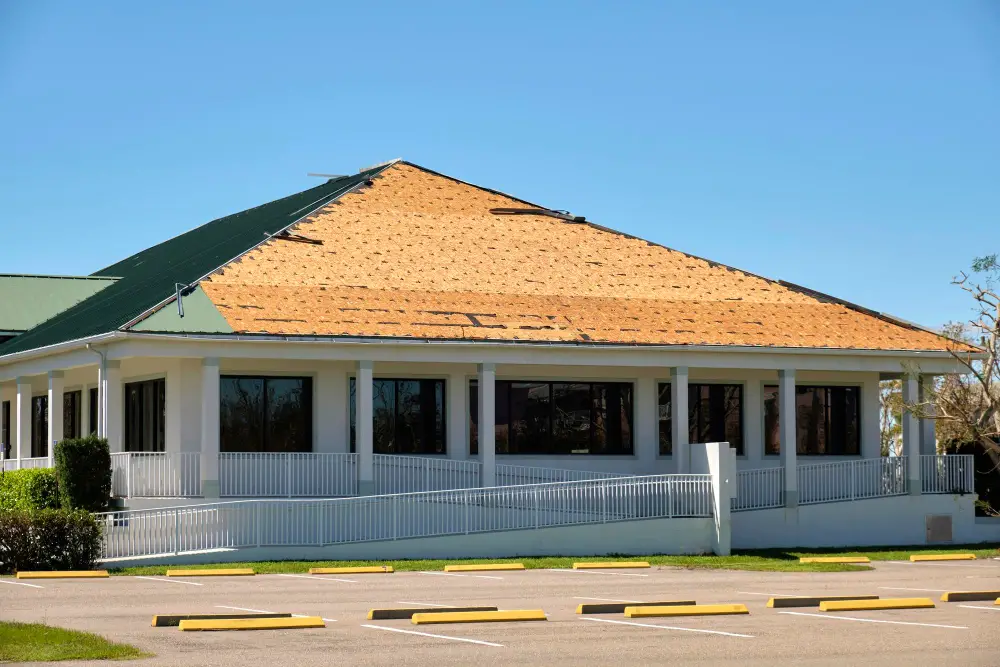
Hurricane windows come equipped with several standout characteristics that render them sturdy and impermeable to tumultuous weather.
A significant characteristic is the pressure resistance. They can withstand high wind pressures owing to their robust construction, providing the utmost protection against hurricane force winds.
Their laminated glass construction is another essential feature. Typically, they consist of two layers of tempered glass bonded with a layer of polyvinyl butyral (PVB). The PVB layer adds to their ability to sustain impacts from debris.
Additionally, the window framing plays a crucial role. Engineered to complement the glass, the frames – usually made from vinyl, aluminum, or steel – contribute to the overall strength of the window structure.
Furthermore, these windows go through rigorous testing. High-velocity projectile impact tests ensure these windows can endure harsh impact incoming at high speeds, mimicking conditions during a severe storm.
Lastly, these windows feature superior energy efficiency. Apart from providing excellent impact resistance, they offer commendable insulation which helps control indoor temperature, contributing to energy savings.
Comparison: Bulletproof Windows Vs Hurricane Windows
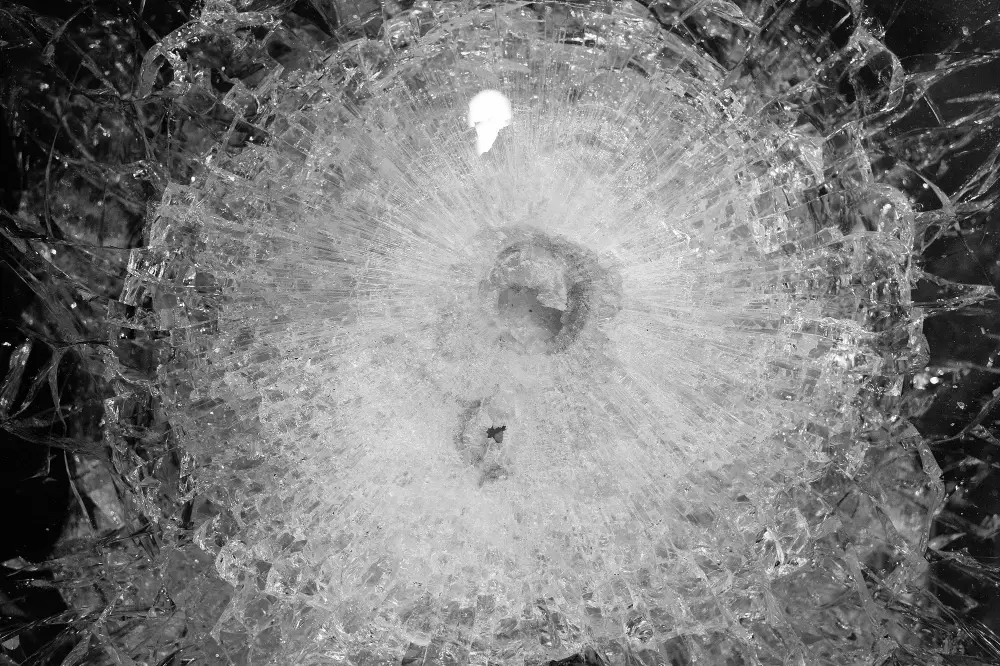
While both bulletproof and hurricane windows are designed to withstand high impacts, they do so in distinct ways.
Bulletproof windows, frequently manufactured from layers of polycarbonate sandwiched between pieces of glass, can handle direct, localized pressure resulting from a bullet. The multiple layers ensure that even if the glass shatters on impact, the underlying polycarbonate layer remains intact, stopping the bullet.
On the other hand, hurricane windows, which are produced from laminated glass or high-grade tempered glass, deal with distributed and extensive pressure caused by high wind hurricane conditions. They demonstrate high resistance to shattering, and even if they do, the laminated layer keeps the broken glass fragments together, reducing the risk of injury from flying shards.
Key differences to note:
- Purpose: Bulletproof windows are typically for security purposes against firearms, while hurricane windows protect against weather-related damage.
- Material: Bulletproof windows use multiple layers of polycarbonate and glass, whereas hurricane windows utilize laminated or tempered glass.
- Impact resistance: Bulletproof windows are designed to stop direct, localized pressure, whereas hurricane windows are constructed to resist extensive, distributed wind force.
Without special modifications, it is advisable not to expect hurricane windows to function effectively as bulletproof ones, or vice versa. Tailoring window choice to fit specific needs and understanding the limitations is important for safety and protection.
Material Composition of Hurricane Windows
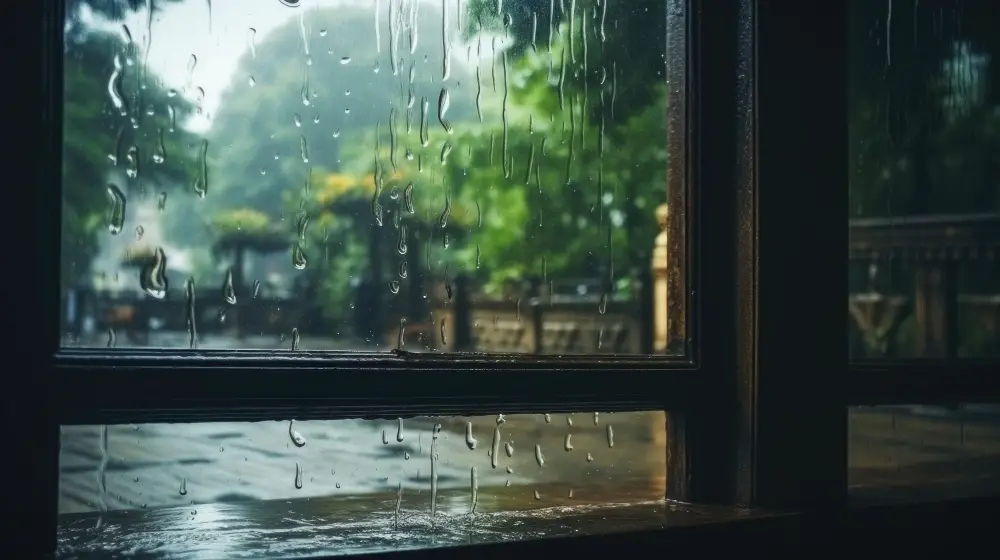
Hurricane windows, also known as impact-resistant windows, are typically manufactured with two layers of tempered glass. Between these layers lies a layer of Polyvinyl Butyral (PVB) or Ethylene-Vinyl Acetate (EVA). This bonding helps in keeping the window shards intact even under a significant impact.
These windows are produced using a heat treatment process which makes them stronger and resistant to breakage. In the case of a break, rather than shattering into sharp fragments, they crumble into small, granular chunks.
For additional support and durability, some manufacturers even include polyester film in between the two glass layers, enhancing their ability to withstand heavy blows.
Another component of these windows is the heavy-duty frame which holds the entire unit together. These frames are usually made from vinyl, metal, or a combination of materials for added strength.
Here are the key considerations about the material composition of hurricane windows:
- Dual-layering of tempered glass for higher strength
- Inclusion of PVB or EVA layer to prevent shattering
- Use of heat treatment process in production
- Optional addition of polyester film for increased resistance
- The presence of a sturdy frame made from durable materials
Performance of Hurricane Windows Against Bullets
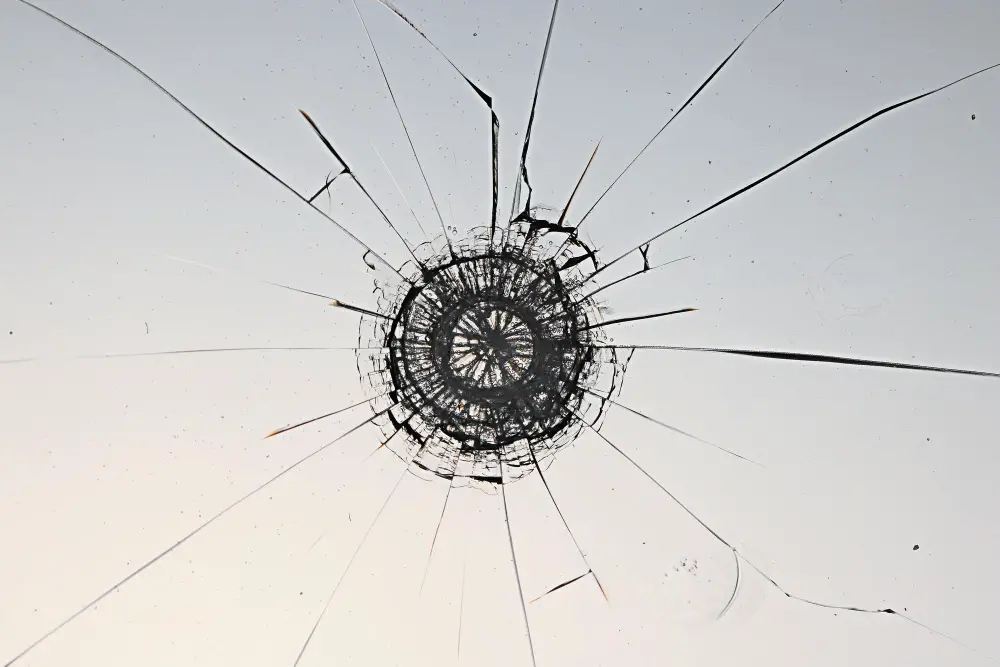
Hurricane windows, diligently engineered to withstand extreme wind pressure and impact from flying debris, have been found to perform surprisingly well against bullet penetration. Their layered setup consisting of glass and polyvinyl butyral (PVB) adds to their strength, enabling to cushion the force.
In testing cases, smaller bullet calibres may not penetrate a hurricane window due to its high impact resistance and multiple layers of security. Although the initial impact may cause some damage, the integrity of the window remains intact.
However, larger caliber bullets could potentially penetrate hurricane windows due to the sheer force of impact. Bear in mind that not all hurricane windows are created equal, the performance can vary based on factors such as materials used and its manufacturer.
Reinforcing hurricane windows with certain supplementary treatments could potentially fortify them against bullets. However, this process may not be as cost-effective or as labor-efficient as it might sound.
If you are in an unlikely situation where you require bullet resistant windows, it is recommended to purchase actual certified bulletproof windows to guarantee the level of protection needed.
Bear in mind that the primary purpose of hurricane windows is to protect against severe weather, not armed attacks. Considering hurricane windows as a substitute for bulletproof windows may not be the safest approach.
Factors Affecting the Bulletproof Nature of Windows
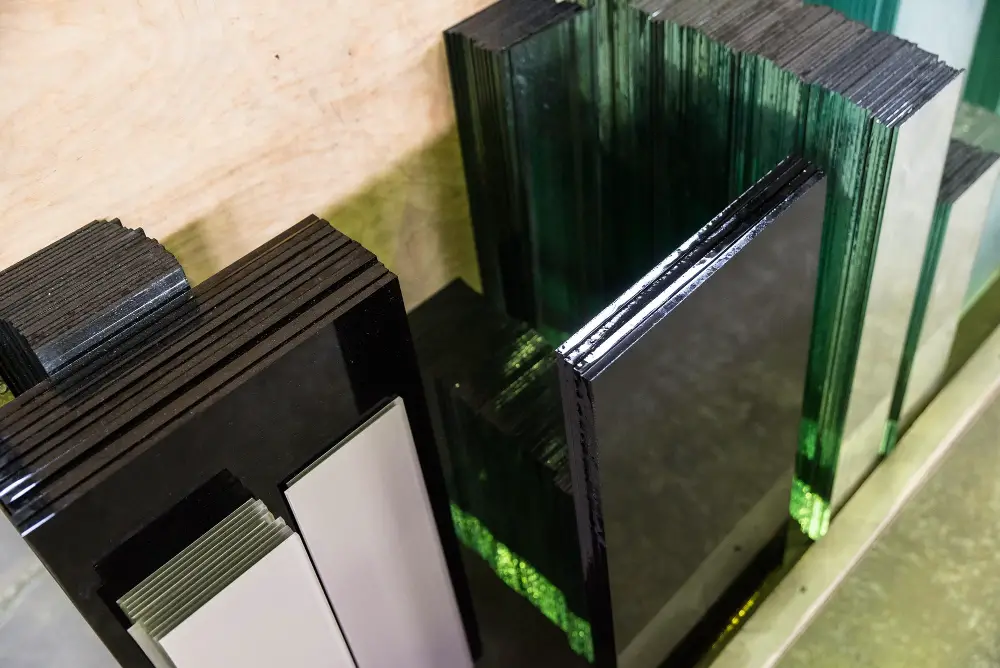
Several elements come into play when discussing the bulletproof nature of windows:
- Material Composition: The constituents of a window greatly impact its bulletproof quality. Materials such as laminated glass or polycarbonate are typically used to construct bulletproof windows due to their high resistance and durability.
- Thickness of Glass: The thickness bears primary importance in providing bullet resistance. Bulletproof glass generally ranges from 19mm to 75mm thick depending upon the level of protection required.
- Layering: Often bulletproof windows are multi-layered. Layers of glass and plastic are alternated, which take the shock and disperse the energy across a larger surface area, reducing the chance of perforation.
- Frame Strength: Even if glass is bulletproof, a weak frame can undermine the whole setup. Thus, a strong window frame material such as steel is necessary.
- Installation Quality: Proper installation is crucial to achieve the desired level of bullet resistance. Secure fixing of the window in its frame ensures the integrity of its bulletproof nature.
By understanding these factors, one can better assess the bulletproof capabilities of their windows.
Legitimate Use Cases With Hurricane Windows and Bullet Resistance
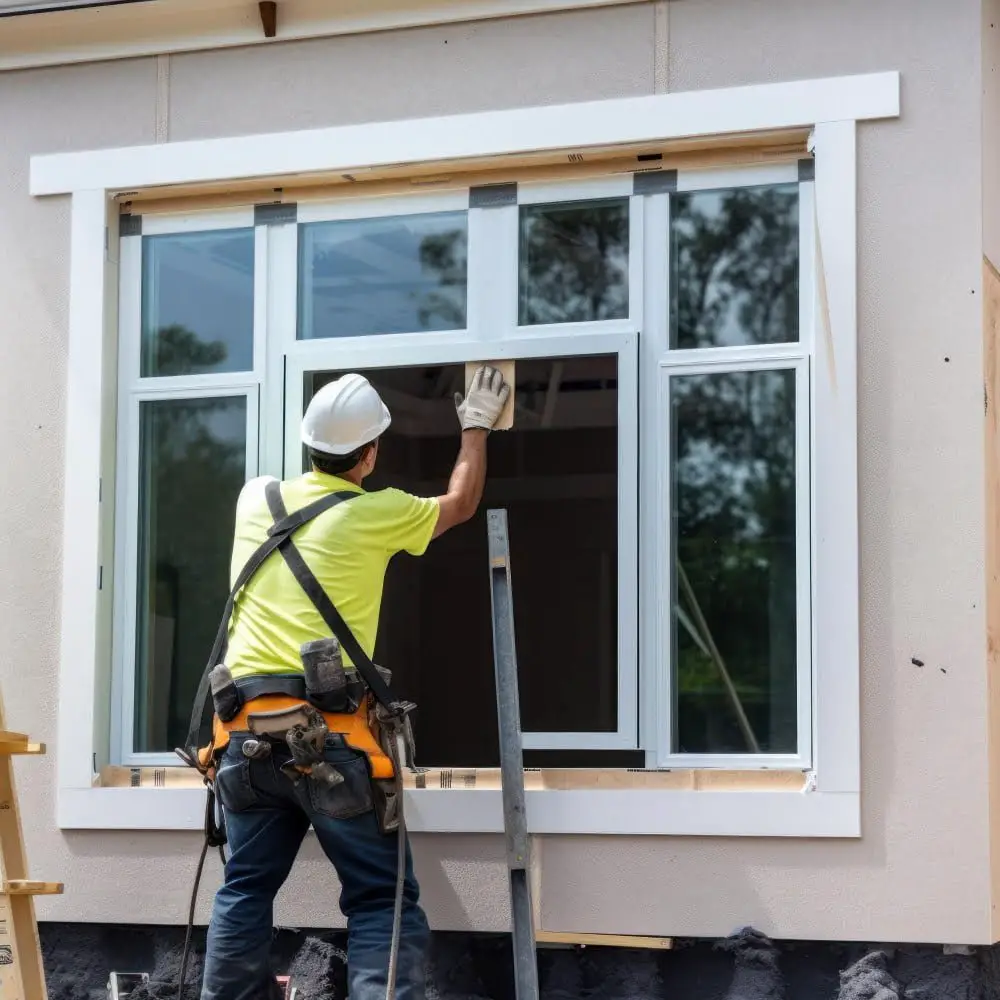
In residential or commercial properties located in regions prone to hurricanes, installing hurricane windows brings significant benefits, like excellent wind resistance and ability to withstand the impact of flying debris.
In situations where security is a major concern, the robust construction of these windows offers enhanced home protection. They may lower the risk of break-ins as their toughened glass can resist extreme force.
While they aren’t classified as bulletproof, anecdotal evidence suggests that certain types of ammunition could be hindered by hurricane windows. However, moderation should be practiced when considering these windows for bullet resistance; they aren’t a substitute for windows specifically designed for this purpose.
Given their impact resistance and thermal insulation capabilities, hurricane windows can also contribute to reduced energy consumption. This efficiency makes them a suitable choice for green building projects.
For regions with substantial noise pollution, these windows can provide soundproofing benefits, offering a quieter indoor environment.
If seeking to increase the property’s market value, installing hurricane windows can aid. Many potential homebuyers see the significant safety benefits of these windows as a valuable asset, contributing to a higher overall price point.
Remember, proper installation is crucial to ensure the optimal performance of hurricane windows. Should you decide to install these high-impact windows, employing certified professionals is recommended to ensure correct placement and sealing.
FAQ
Can a bullet penetrate hurricane glass?
While hurricane glass can withstand a bullet, it’s not specifically designed for bullet resistance.
What is the difference between bulletproof glass and hurricane glass?
Bulletproof glass is typically thicker and designed to absorb the energy of bullets by embedding the shell within the glass, while hurricane glass utilizes laminated materials to resist shattering from windborne projectiles, but isn’t intended to stop bullets.
Can you shoot through impact glass?
Yes, it is technically possible to shoot through impact glass, however, its robust construction often allows it to withstand small caliber bullets.
How does the manufacturing process differ between bulletproof and hurricane glass?
Bulletproof glass is made by layering sheets of glass and plastic together and then subjecting them to heat for bonding, while hurricane glass involves a process of laminating two glass pieces around a thin, clear film, which is intended to hold the glass together in case of shattering.
Is it possible to have dual-functioning glass that is both bullet and hurricane-resistant?
Yes, it is possible to have dual-functioning glass that is both bullet and hurricane-resistant, with certain industry-standard upgrades and specifications.
What are the primary materials used in the production of hurricane and bulletproof glass?
Hurricane and bulletproof glass are primarily manufactured using several layers of tempered glass and plastic sandwiched together.
Related Stories
- Benefits of Hurricane Impact Windows: Understanding the Advantages for Your Home
- Hurricane Windows Cost: Understanding Pricing and Value
- Factors Affecting Window Energy Performance: What You Need to Know
- Energy-efficient Window Materials: Choosing the Best for Your Home
- Double and Triple-pane Window Benefits: A Side-by-side Comparison
Recap
